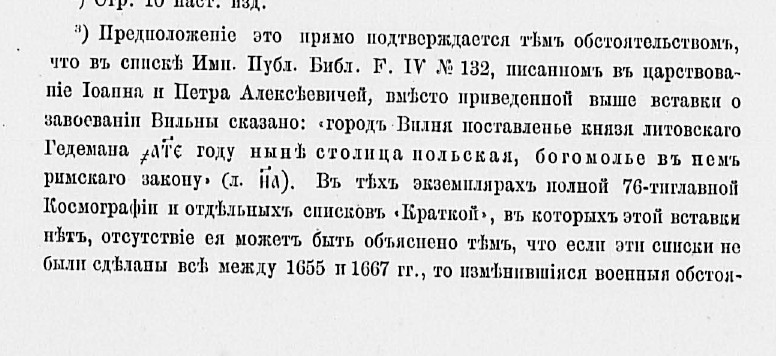86702, Египетские зодиаки
Послано guest, 09-02-2011 23:37

Хорошая прорисовка зодиака Сененмута (или Сенмута), видны иероглифы даже на теле Тельца - те же, что и на зодиаке Сети I, только в обратном порядке.
http://www.robertbauval.co.uk/articles/articles/nkleo4.html
По поводу зодиака "с одетой Нут" ("Начало ордынской Руси", 2005г), изображение у ФиН было частично обрезано, было предположено, что в недостающей части изображена недостающая планета Венера.
http://chronologia.org/ord_rus/or01.html
http://chronologia.org/ord_rus/im/na1-008.jp g
Пытался разыскать в сети картинку целиком, нашел только следующие:
<""| > маленькая, ниже её трехкратное увеличение > маленькая, ниже её трехкратное увеличение
<""| > >
<""| > >
<""| > двухкратное увеличение предыдущего > двухкратное увеличение предыдущего
<""| > >
<""| > двухкратное увеличение предыдущего > двухкратное увеличение предыдущего
Есть ли там Венера? Если предположить, что фигура Водолея - женская, то, может быть, он сам и олицетворяет Венеру?
Другие похожие изображения богини Нут со знаками зодиака:
<""| > Interior of the Coffin of Petamenophis lid, 2nd Century AD. Louvre Museum. Очень похожее на предыдущее, немного обрезано, тоже Козерог отдельно, четыре жука. > Interior of the Coffin of Petamenophis lid, 2nd Century AD. Louvre Museum. Очень похожее на предыдущее, немного обрезано, тоже Козерог отдельно, четыре жука.
http://www.robertbauval.co.uk/articles/articles/nkleo5.html
<""| > увеличил в 2 раза > увеличил в 2 раза
<""| > Слева: богиня Нут в сарафане, саркофаг Сотера из Эль-Курне, II в. н.э. > Слева: богиня Нут в сарафане, саркофаг Сотера из Эль-Курне, II в. н.э.
<""| > Она же, но, оказывается, с голубыми глазами. Фото с сайта Британского Музея: > Она же, но, оказывается, с голубыми глазами. Фото с сайта Британского Музея:
http://www.britishmuseum.org/explore/highlights/highlight_objects/aes/l/lid_of_the_coffin_of_soter.aspx
Пояснения:
Lid of the coffin of Soter
From Qurna, Thebes, Egypt
Roman Period, early 2nd century AD
Archon of Thebes
In January 1820 a tomb was found in the Theban necropolis belonging to members of the family of Soter; the coffins and mummies are now in various European museums. The site of their discovery was never recorded, but has been plausibly identified as Theban tomb No. 32, originally of the reign of Ramesses II (1279-1213 BC).
The coffins are all rectangular in form, comprising a baseboard and a cover with a vaulted top (representing the canopy of heaven) and four corner-posts.
The inscriptions are in hieroglyphic and Greek. The Greek inscriptions provide genealogical information about the occupants, sometimes including exact ages and dates of birth and death. Several of these events are dated to specific years of the reigns of the Roman emperors Trajan (reigned AD 87-117), Hadrian (reigned AD 117-138) and Antoninus Pius (reigned AD 138-161).
The exterior decoration of the coffin is taken from the traditional Egyptian repertoire. Inside is a large figure of the sky-goddess Nut, as if stretched above the mummy. Twelve female figures at each side personify the hours of day and night, and the morning and evening suns in barques flank the goddess' head. At the sides of Nut's body are painted the signs of the zodiac, Leo to Capricorn on the left, and Aquarius to Cancer on the right.
S. Walker and M. Bierbrier, Ancient faces: mummy portrai-1 (London, The British Museum Press, 1997)
<""| > Гроб некоей Клеопатры. Одетая в сарафан Нут с четырьмя жуками. Тоже крышка гроба изнутри. Фото с сайта Британского Музея: > Гроб некоей Клеопатры. Одетая в сарафан Нут с четырьмя жуками. Тоже крышка гроба изнутри. Фото с сайта Британского Музея:
http://www.britishmuseum.org/explore/highlights/highlight_objects/aes/c/coffin_of_cleopatra.aspx
Пояснения:
Coffin of Cleopatra
From Qurna, Thebes, Egypt
Roman period, early 2nd century AD
This coffin is one of a group belonging to three generations of the family of Soter at Thebes, all of whom lived between AD 109 and 146. An inscription on the coffin tells us that this young woman, called Cleopatra, was just over 17 when she died. This age has been confirmed by recent CT scans of her mummy.
Cleopatra's coffin is rectangular, with a vaulted lid and corner posts, a form that was first seen in the Twenty-fifth Dynasty (about 747-656 BC). The lid is decorated with two rows of deities within shrines, separated by a column of inscription. At the end of the rows of deities are scenes of the weighing of the heart and adoration of Osiris from the Book of the Dead.
The lower part of the coffin shows a procession of gods and goddesses, who accompany the boat in which the sun god traverses the sky. The celestial imagery continues on the interior. The goddess Nut, dressed in contemporary costume, stretches the length of the coffin, her fingers and toes touching the ends, as the ancient Egyptians believed that they touched the horizons. Beside Nut are signs of the zodiac, including the Piscean fishes and the Gemini twins.
Последние три изображения ТИ-датированы 2 веком н.э., т.е. поздний эллинистический Египет.
|

 > маленькая, ниже её трехкратное увеличение
> маленькая, ниже её трехкратное увеличение >
> >
> > двухкратное увеличение предыдущего
> двухкратное увеличение предыдущего >
> > двухкратное увеличение предыдущего
> двухкратное увеличение предыдущего > Interior of the Coffin of Petamenophis lid, 2nd Century AD. Louvre Museum. Очень похожее на предыдущее, немного обрезано, тоже Козерог отдельно, четыре жука.
> Interior of the Coffin of Petamenophis lid, 2nd Century AD. Louvre Museum. Очень похожее на предыдущее, немного обрезано, тоже Козерог отдельно, четыре жука. > увеличил в 2 раза
> увеличил в 2 раза > Слева: богиня Нут в сарафане, саркофаг Сотера из Эль-Курне, II в. н.э.
> Слева: богиня Нут в сарафане, саркофаг Сотера из Эль-Курне, II в. н.э. > Она же, но, оказывается, с голубыми глазами. Фото с сайта Британского Музея:
> Она же, но, оказывается, с голубыми глазами. Фото с сайта Британского Музея: > Гроб некоей Клеопатры. Одетая в сарафан Нут с четырьмя жуками. Тоже крышка гроба изнутри. Фото с сайта Британского Музея:
> Гроб некоей Клеопатры. Одетая в сарафан Нут с четырьмя жуками. Тоже крышка гроба изнутри. Фото с сайта Британского Музея: